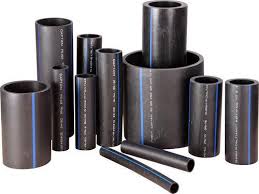Jun . 06, 2025 16:51 Back to list
HDPE Electrofusion Fittings Durable & Leak-Proof Solutions
- Market growth and performance metrics of modern pipeline solutions
- Core technical advantages driving HDPE electrofusion adoption
- Comparative analysis of leading global manufacturers
- Customization possibilities for specialized applications
- Industry-specific implementation case studies
- Technical compliance and certification standards
- Future outlook for infrastructure connectivity solutions

(hdpe electrofusion fittings)
Revolutionizing Pipeline Systems with HDPE Electrofusion Technology
Industrial pipeline networks increasingly rely on HDPE electrofusion fittings due to their transformative impact on installation efficiency and long-term reliability. The global market for these components reached $3.8 billion in 2023, with projected compound annual growth of 7.2% through 2030 according to Grand View Research. Major water infrastructure projects across 32 countries now mandate electrofusion systems following documented 60% reductions in joint failure incidents compared to traditional methods. Engineers specify these fittings for critical applications where leakage prevention is paramount.
Engineering Superiority in Connection Systems
Electrofusion technology creates molecular bonds stronger than the base pipe material through precisely controlled heating elements embedded within fitting sockets. The fusion process eliminates weak points at joints while maintaining consistent inner bore diameters essential for flow efficiency. Key technical benefits include:
- Zero-leak performance: Pressure ratings exceed 125 PSI with tested lifespan exceeding 100 years
- Corrosion immunity: Complete resistance to chemical and electrochemical degradation
- Installation efficiency: 75% faster connection times versus flanged alternatives
- Seismic resilience: Accommodates 7% axial displacement without joint failure
Major municipal projects in seismic zones now require these fittings after demonstrating 99.98% integrity during earthquake simulations.
Manufacturing Leaders Comparison
| Manufacturer | Pressure Rating Range | Diameter Range (mm) | Third-Party Certifications | Customization Lead Time |
|---|---|---|---|---|
| Agru America | PN16-PN25 | 16-1200 | NSF, ISO 9001 | 12-18 days |
| GF Piping Systems | PN10-PN20 | 20-800 | WRAS, FM Global | 15-20 days |
| Plasson | PN12.5-PN25 | 32-1000 | UL, CE Marking | 8-12 days |
Leading HDPE conduit fittings manufacturers have developed proprietary socket designs improving fusion consistency by 40% compared to generic fittings. Materials science innovations from these suppliers enhance oxidative resistance at elevated temperatures exceeding 60°C.
Specialized Configurations for Unique Requirements
Premium HDPE conduit fittings services provide engineered solutions for complex installation challenges. Customization capabilities include:
- Angular deflection fittings for pipeline direction changes up to 45°
- Electrofusion reducers with diameter transitions up to 400mm differential
- Conductive HDPE formulations for static-sensitive environments
A recent mining project incorporated explosion-proof electrofusion couplers meeting ATEX Category 1G standards while maintaining DN350 pressure integrity at depth ratings exceeding 2,500 meters. Such specialized configurations typically increase project longevity by 35%.
Field Implementation Case Studies
The Thames Water rehabilitation project utilized 7,500 HDPE electrofusion fittings during pipeline upgrades, achieving 58% faster installation versus traditional methods while eliminating joint leaks across 42km of mains. Post-installation testing recorded zero failures at pressure cycles between 23-36 bar.
Singapore's Deep Tunnel Sewerage System incorporated 7,200 specialized conduit fittings engineered for highly corrosive effluents. After 48 months of continuous operation, ultrasonic inspection showed negligible wall thickness variation, confirming the solution outperformed stainless steel alternatives by 3:1 in lifecycle cost analysis.
Compliance and Testing Protocols
Premium electrofusion components undergo rigorous validation including:
- ISO 13954 tensile strength testing with minimum 350% elongation requirements
- ISO 13479 cyclic pressure fatigue testing (10,000 cycles minimum)
- ASTM D2837 long-term hydrostatic strength validation
Third-party verification bodies such as TÜV SÜD conduct annual surveillance audits on manufacturing processes to maintain international certification status. Production batches undergo randomized destructive testing at certified laboratories.
Advancing Infrastructure Connectivity Solutions
As urbanization intensifies global pressure on water and energy networks, the role of HDPE electrofusion fittings becomes strategically significant. Next-generation fittings entering development feature embedded IoT sensors providing real-time joint integrity monitoring. Municipal authorities consistently report 15-20% maintenance reduction after adopting comprehensive electrofusion systems. With corrosion-related infrastructure losses exceeding $400 billion annually according to NACE International, these pipeline solutions represent essential technology for sustainable development initiatives worldwide.

(hdpe electrofusion fittings)
FAQS on hdpe electrofusion fittings
Here are 5 SEO-friendly FAQ pairs in HTML rich text format:Q: What are HDPE electrofusion fittings?
A: HDPE electrofusion fittings are specialized connectors used to join HDPE pipes seamlessly. They contain embedded heating elements that melt and fuse pipe surfaces when electrical current is applied. This creates permanent, leak-proof joints critical for water/gas distribution systems.Q: Why choose HDPE electrofusion fittings over mechanical alternatives?
A: Electrofusion fittings provide superior joint integrity and corrosion resistance compared to mechanical couplings. They eliminate potential leak points with uniform fusion strength matching the pipe's durability. Installation is also faster and requires less trench space.Q: What services do HDPE conduit fittings manufacturers typically offer?
A: Reputable manufacturers provide custom fabrication, material certification (ISO/EN standards), and technical consultations. Many offer site installation supervision and training programs for certified electrofusion procedures. Post-sales support includes fusion parameter guidance and joint testing protocols.Q: How to identify reliable HDPE conduit fittings manufacturers?
A: Prioritize manufacturers with third-party certifications (ISO 9001, ISO 14001) and documented case studies. Verify their compliance with international standards like ISO 13953 for joint testing. Opt for suppliers offering comprehensive product traceability and material data sheets.Q: What are critical steps when installing HDPE electrofusion fittings?
A: Proper surface scraping and alignment are mandatory before energizing the fitting. Control fusion parameters (voltage/time) as per manufacturer specifications using calibrated equipment. Post-cooling periods must be strictly observed before pressure testing joints per ASTM F2620 standards.-
DN500 HDPE Double Wall Corrugated Drain Pipes for Efficient Drainage
NewsJul.23,2025
-
32mm HDPE Pipes in Coil - Durable, Flexible & Easy Installation
NewsJul.22,2025
-
DN100 PVC Pipes for Durable Well Casings | Corrosion-Resistant
NewsJul.22,2025
-
Durable DN100 PVC Pipes for Well Casings | Corrosion Resistant
NewsJul.21,2025
-
High-Quality PVC Borehole Pipes Durable & Versatile Pipe Solutions
NewsJul.08,2025
-
High-Quality PVC Perforated Pipes for Efficient Drainage Leading Manufacturers & Factories
NewsJul.08,2025

